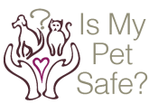Monkey, K9 Advantix II and BayerDVM
This is a post about the sad story of Monkey, a yorkshire terrier and the pet parent's belief that Monkey's death was the result of using K9 Advantix II flea and tick medication. This post has been delayed for quite a few weeks as I waited on further information which does not appear to be forthcoming. Thus, please keep in mind I have been unable to fully verify all details as is normally done here.

Background
You can read all about Monkey on Change.org where her pet father posted a petition for the EPA regarding dosages of flea and tick treatments. The TL;DR of it is that Monkey was found having seizures and died a short time later of heart failure. This happened a few days after applying K9 Advantix II, a product that Monkey had used for a number of years without incident.
Analysis
The claim from the petition is as follows:
Small dogs are prescribed the same dosage as dogs twice or three times their size. At any time, the chemicals can overwhelm their fragile immune systems and cause everything from rashes and seizures to death. Monkey was only 7 pounds, but she was given the same dosage as every other dog -- and this time, it killed her.
So there are really only two pertinent concerns. First, just how dangerous are the chemicals used in the product and second, are the claims about dosing accurate?
The BayerDVM site provides links to product ingredients and application instructions. The primary ingredients are (by weight)
|
Imidacloprid |
8.80% |
|
Permethrin* |
44.00% |
|
Pyriproxyfen |
0.44% |
Imidacloprid is an insecticide that disrupts the bug's nervous system and mimics nicotine, which is toxic to many insects. Imidacloprid is used widely on crops, pets and in homes. While imidacloprid can be a skin irritant, it does not go through the skin easily - that is one reason why it can be applied topically to a pet. Oral ingestion results in distribution throughout the body, but it is removed in fairly short order by the liver. Rats that at imidacloprid were able to excrete almost all (90%) in one day. Birds, however, are not affected.
Permethrin is a chemical that mimics extracts of chrysanthemum flowers and it is used widely - on crops, lawns, pets, buildings and even clothes and in restaurants. Permethrin is highly toxic by ingetstion and contact to insects as it disrupts the nervous system and they are unable to break down and excrete the toxin quickly as are humans and dogs. Permethrin is not absorbed through the skin but is so quickly if orally ingested. The maximum concentration in the body is peaks in about four hours. Studies with rats show that permethrin can be removed fairly rapidly with blood levels dropping in half in 24 hours. However, cats and especially fish, are unable to break down permethrin as quickly and this is why you see 'do not use on cats' on warning labels for flea and tick treatments. Permethrin can still cause odd behavior in dogs if ingested orally - drooling and skin twitching being most common.
Finally, pyriproxyfen is a hormone disruptor that inhibits the growth of insects, including fleas, ticks and mosquitoes. Pyriproxyfen is not toxic to adult insects, only the young, and has only mild negative effects, if any, on other animals. Dogs that were given very high does of pyriproxyfen did vomit the first day but then had no further symptoms.
Our second question pertained to the quantity of the active ingredients. Again, referencing the BayerDVM website, K9 Advantix II is sold in four different sizes based upon the weight of the dog. For instance, the smallest dose is 0.4mL and recommended for dogs 10lbs or less. The next larger size, 1.0mL, is for dogs weighing 11-20lbs. Medium sized dogs of 21-55 lbs are given a 2.5mL dose.
Per the product literature, the amount of active ingredient is calculated by the weight of the product. Let's take the small dog dosage of 1mL. For our back of the envelope calculations, I make the reasonable assumption the product has a density close to that of water and thus has a weight of 1g. This converts to 0.44g of permethrin and 0.88g of imidacloprid. Doing the same for the tiny dog size of 0.4mL yields doses of 0.176g permethrin and 0.035g imidacloprid. In fact, what is important here is not the precise amounts but that the dosages vary by the quantity of liquid applied. It is not true that the dose is the same for all sized dogs as claimed in the petition.
Based on the above, our opinion is that a dog would need to orally ingest a large quantity of imidacloprid and/or permethrin to experience significant nervous system effects. All flea and tick treatment warning labels clearly state not to allow your dog to ingest the liquid and the directions also indicate application locations that are reasonably hard to reach to lick off. When applied with the proper dosage to the suggested locations, the product should be safe under almost all circumstances and any adverse reaction limited topically to the skin.
On BayerDVM
The primary reason this posting has been on hold is that IMPS has been waiting for a response to our numerous inquires of BayerDVM. In the end, BayerDVM made no attempt to contact us and I find this pretty troubling.
First, IMPS clearly identified our self as a pet safety blog and one that plays it down the middle when evaluating safety claims. A quick look at our content and BayerDVM should have seen they could not get a fairer venue to tell their side of this sad event.
Second, hiding behind a corporate wall when there is negative publicity does not inspire confidence in a corporation. That a firm won't discuss the negative (even if untrue) reduces confidence in any public statements they do make.


